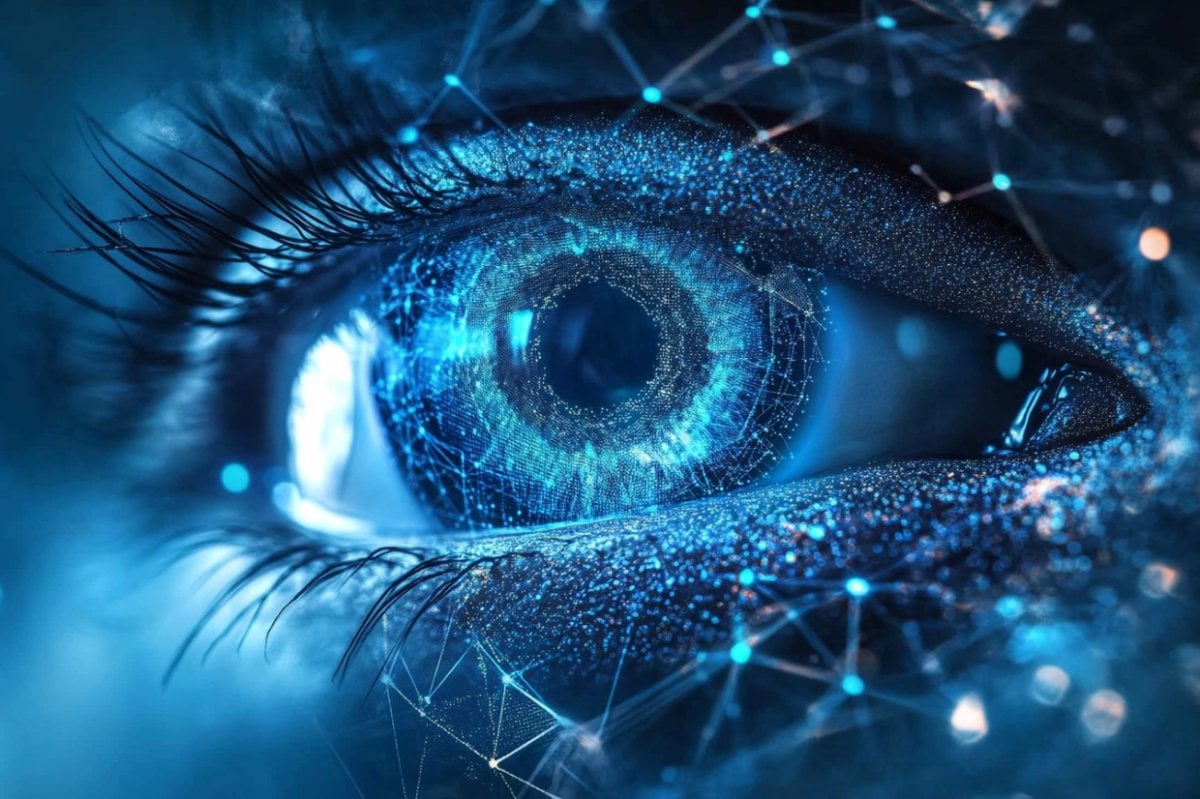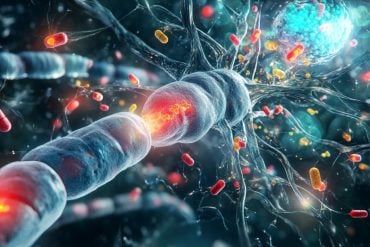Summary: Researchers have developed a self-powered artificial synapse capable of color recognition with near-human precision. Unlike traditional systems that demand external energy and massive data processing, this device mimics biological vision and generates its own electricity using solar cells.
It can distinguish colors with 10-nanometer resolution and enables logic functions based on light wavelengths. The innovation paves the way for low-power, high-performance machine vision in edge devices like smartphones, wearables, and autonomous vehicles.
Key Facts:
- Self-Powered Vision: The device uses dye-sensitized solar cells to power itself without external energy.
- High Color Resolution: Distinguishes colors with 10-nanometer precision across the visible spectrum.
- Edge-Ready AI: Enables efficient visual recognition and logic operations in resource-constrained devices.
Source: Tokyo University of Science
As artificial intelligence and smart devices continue to evolve, machine vision is taking an increasingly pivotal role as a key enabler of modern technologies.
Unfortunately, despite much progress, machine vision systems still face a major problem: processing the enormous amounts of visual data generated every second requires substantial power, storage, and computational resources.

This limitation makes it difficult to deploy visual recognition capabilities in edge devices—such as smartphones, drones, or autonomous vehicles.
Interestingly, the human visual system offers a compelling alternative model. Unlike conventional machine vision systems that have to capture and process every detail, our eyes and brain selectively filter information, allowing for higher efficiency in visual processing while consuming minimal power.
Neuromorphic computing, which mimics the structure and function of biological neural systems, has thus emerged as a promising approach to overcome existing hurdles in computer vision. However, two major challenges have persisted.
The first is achieving color recognition comparable to human vision, whereas the second is eliminating the need for external power sources to minimize energy consumption.
Against this backdrop, a research team led by Associate Professor Takashi Ikuno from the School of Advanced Engineering, Department of Electronic Systems Engineering, Tokyo University of Science (TUS), Japan, has developed a groundbreaking solution.
Their paper, published in Volume 15 of the journal Scientific Reports on May 12, 2025, introduces a self-powered artificial synapse capable of distinguishing colors with remarkable precision.
The study was co-authored by Mr. Hiroaki Komatsu and Ms. Norika Hosoda, also from TUS.
The researchers created their device by integrating two different dye-sensitized solar cells, which respond differently to various wavelengths of light. Unlike conventional optoelectronic artificial synapses that require external power sources, the proposed synapse generates its electricity via solar energy conversion.
This self-powering capability makes it particularly suitable for edge computing applications, where energy efficiency is crucial.
As evidenced through extensive experiments, the resulting system can distinguish between colors with a resolution of 10 nanometers across the visible spectrum—a level of discrimination approaching that of the human eye.
Moreover, the device also exhibited bipolar responses, producing positive voltage under blue light and negative voltage under red light. This makes it possible to perform complex logic operations that would typically require multiple conventional devices.
“The results show great potential for the application of this next-generation optoelectronic device, which enables high-resolution color discrimination and logical operations simultaneously, to low-power artificial intelligence (AI) systems with visual recognition,” notes Dr. Ikuno.
To demonstrate a real-world application, the team used their device in a physical reservoir computing framework to recognize different human movements recorded in red, green, and blue.
The system achieved an impressive 82% accuracy when classifying 18 different combinations of colors and movements using just a single device, rather than the multiple photodiodes needed in conventional systems.
The implications of this research extend across multiple industries. In autonomous vehicles, these devices could enable more efficient recognition of traffic lights, road signs, and obstacles. In healthcare, they could power wearable devices that monitor vital signs like blood oxygen levels with minimal battery drain.
For consumer electronics, this technology could lead to smartphones and augmented/virtual reality headsets with dramatically improved battery life while maintaining sophisticated visual recognition capabilities.
“We believe this technology will contribute to the realization of low-power machine vision systems with color discrimination capabilities close to those of the human eye, with applications in optical sensors for self-driving cars, low-power biometric sensors for medical use, and portable recognition devices,” remarks Dr. Ikuno.
Overall, this work represents a significant step toward bringing the wonders of computer vision to edge devices, enabling our everyday devices to see the world more like we do.
Funding: This work was partially supported by the JST and the establishment of university fellowships for the creation of science and technology innovation (Grant Number JPMJFS2144). Additional support was provided by the JST SPRING (Grant Number JPMJSP2151).
About this visual neuroscience and AI research news
Author: Yoshimasa Iwasaki
Source: Tokyo University of Science
Contact: Yoshimasa Iwasaki – Tokyo University of Science
Image: The image is credited to Neuroscience News
Original Research: Open access.
“Polarity-tunable dye-sensitized optoelectronic artificial synapses for physical reservoir computing-based machine vision” by Takashi Ikuno et al. Scientific Reports
Abstract
Polarity-tunable dye-sensitized optoelectronic artificial synapses for physical reservoir computing-based machine vision
Conventional machine vision systems process huge time-series data per second, presenting significant challenges for edge-device applications due to limitations in data transfer and storage.
Inspired by the human visual system, artificial optoelectronic synapses replicating synaptic responses have emerged as promising solutions.
However, achieving color recognition comparable to human vision remains challenging.
Moreover, most optoelectronic artificial synapses rely on photocurrent-based operation, producing low current values and necessitating external circuits.
This study reports a self-powered optoelectronic artificial synapse capable of distinguishing wavelengths with a resolution of 10 nm by integrating dye-sensitized solar cells.
The device exhibits synaptic responses to light pulses and bipolar responses when exposed to different wavelengths.
The wavelength-dependent bipolar behavior enables exceptional separation capabilities, achieving six-bit resolution with 64 distinct states and supporting multiple logic operations, including AND, OR, and XOR, within a single device.
Additionally, the device leverages distinct responses to red, green, and blue light irradiation for physical reservoir computing, facilitating the classification of color-coded human motion with an accuracy of 82%.
These findings advance the development of optoelectronic artificial synapses for precise, human-eye-like color discrimination.






